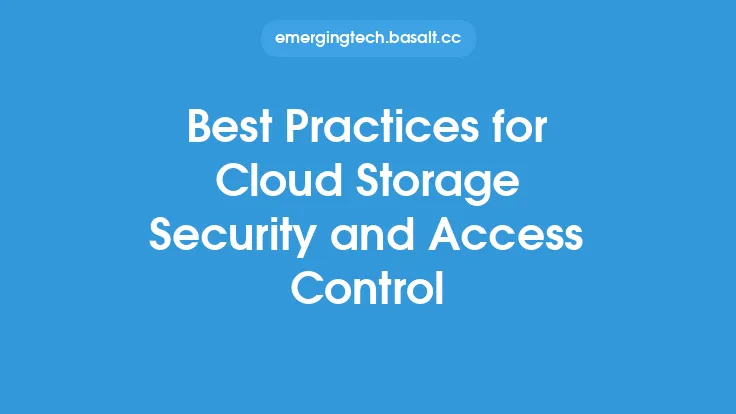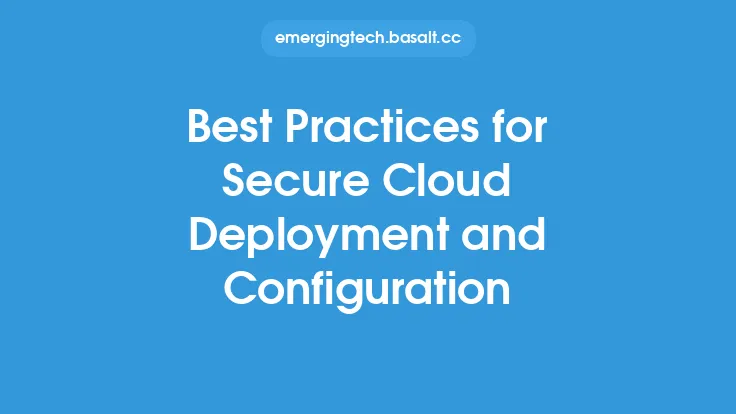The security of a blockchain network is a multifaceted concept that encompasses various aspects, including the protection of user data, prevention of unauthorized access, and mitigation of potential threats. As blockchain technology continues to evolve and gain widespread adoption, the importance of implementing robust security measures cannot be overstated. In this article, we will delve into the best practices for ensuring the security of a blockchain network, highlighting the key considerations and strategies that can help prevent breaches and maintain the integrity of the network.
Introduction to Blockchain Network Security
Blockchain network security refers to the measures and protocols put in place to protect a blockchain network from unauthorized access, use, disclosure, disruption, modification, or destruction. This includes safeguarding the network's infrastructure, data, and transactions from various types of threats, such as hacking, phishing, and other forms of cyber attacks. A secure blockchain network is essential for maintaining the trust and confidence of users, as well as ensuring the integrity and reliability of the data and transactions that are recorded on the network.
Network Architecture and Design
A well-designed network architecture is critical to the security of a blockchain network. This includes implementing a robust and scalable infrastructure that can support a large number of users and transactions, as well as ensuring that the network is highly available and fault-tolerant. A secure network architecture should also include features such as encryption, firewalls, and intrusion detection systems to prevent unauthorized access and detect potential threats. Additionally, the network should be designed with redundancy and failover capabilities to ensure that it can continue to operate even in the event of a disaster or other disruption.
Node and Network Configuration
The configuration of nodes and the network is also an important aspect of blockchain network security. This includes ensuring that each node on the network is properly configured and secured, with features such as encryption and access controls in place to prevent unauthorized access. The network should also be configured to use secure communication protocols, such as HTTPS or TLS, to protect data in transit. Furthermore, the network should be regularly monitored and updated to ensure that any known vulnerabilities are patched and that the network remains secure.
User Authentication and Authorization
User authentication and authorization are critical components of blockchain network security. This includes implementing robust authentication mechanisms, such as multi-factor authentication, to ensure that only authorized users can access the network and perform transactions. The network should also have a well-defined authorization framework in place, which dictates what actions each user can perform and what data they can access. This helps to prevent unauthorized access and ensures that sensitive data is only accessible to authorized personnel.
Data Encryption and Protection
Data encryption and protection are essential for maintaining the confidentiality and integrity of data on a blockchain network. This includes encrypting data both in transit and at rest, using secure encryption algorithms and protocols such as AES and SSL/TLS. The network should also have a well-defined data backup and recovery process in place, to ensure that data can be quickly and easily recovered in the event of a disaster or other disruption. Additionally, the network should have a data retention policy in place, which dictates how long data is stored and when it is deleted.
Smart Contract Security
Smart contracts are self-executing contracts with the terms of the agreement written directly into lines of code. They are a critical component of many blockchain networks, and their security is essential for maintaining the integrity of the network. This includes ensuring that smart contracts are properly tested and validated before they are deployed, to prevent bugs and vulnerabilities that could be exploited by attackers. The network should also have a well-defined smart contract deployment and management process in place, which dictates how smart contracts are deployed, updated, and managed.
Incident Response and Disaster Recovery
Incident response and disaster recovery are critical components of blockchain network security. This includes having a well-defined incident response plan in place, which dictates how the network responds to security incidents such as breaches or other disruptions. The plan should include procedures for containing and eradicating the incident, as well as notifying affected users and stakeholders. The network should also have a disaster recovery plan in place, which dictates how the network is restored in the event of a disaster or other disruption.
Security Audits and Testing
Security audits and testing are essential for identifying and addressing potential vulnerabilities in a blockchain network. This includes performing regular security audits, which involve testing the network's security controls and protocols to identify any weaknesses or vulnerabilities. The network should also be subject to regular penetration testing, which involves simulating cyber attacks on the network to test its defenses. Additionally, the network should be subject to regular vulnerability assessments, which involve identifying and addressing potential vulnerabilities in the network's code and infrastructure.
Best Practices for Blockchain Network Security
There are several best practices that can help ensure the security of a blockchain network. These include:
- Implementing robust security controls and protocols, such as encryption and access controls
- Regularly monitoring and updating the network to ensure that any known vulnerabilities are patched
- Implementing a well-defined incident response and disaster recovery plan
- Performing regular security audits and testing, including penetration testing and vulnerability assessments
- Ensuring that smart contracts are properly tested and validated before they are deployed
- Implementing a well-defined data backup and recovery process, as well as a data retention policy
- Ensuring that users are properly authenticated and authorized, using robust authentication mechanisms and a well-defined authorization framework.
Conclusion
In conclusion, the security of a blockchain network is a complex and multifaceted concept that requires careful consideration and planning. By implementing robust security controls and protocols, regularly monitoring and updating the network, and performing regular security audits and testing, organizations can help ensure the security and integrity of their blockchain network. Additionally, by following best practices such as implementing a well-defined incident response and disaster recovery plan, ensuring that smart contracts are properly tested and validated, and implementing a well-defined data backup and recovery process, organizations can help prevent breaches and maintain the trust and confidence of users.





